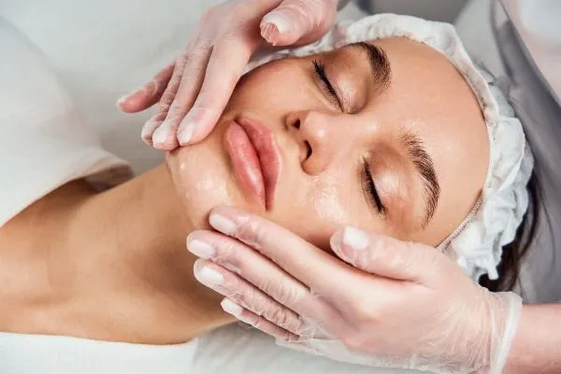Alopecia Areata Treatment Guide: Options, Results, and What to Expect

Alopecia areata, a condition where the immune system mistakenly attacks hair follicles, can be a challenging and emotional experience for those affected. Characterized by sudden hair loss, typically in small, round patches, it can progress to more widespread hair loss in some cases. While there is no definitive cure, various treatment options are available to help manage the condition and potentially stimulate hair regrowth. This guide will cover the most effective treatment options, discuss potential results, and outline what to expect during the treatment process.
Read more:- Alopecia Areata Treatment
1. Understanding Alopecia Areata: An Overview
Alopecia areata is an autoimmune disorder that leads to unpredictable hair loss, often affecting the scalp but sometimes impacting other areas like the eyebrows, eyelashes, and beard. It affects people of all ages, though it often begins in childhood or young adulthood. The cause of alopecia areata is not fully understood, but genetics, environmental factors, and immune response irregularities are thought to contribute.
2. Treatment Options for Alopecia Areata
A. Topical Corticosteroids
Topical corticosteroids are commonly prescribed as the first line of treatment for mild to moderate alopecia areata. These anti-inflammatory creams or ointments can help suppress immune reactions around hair follicles, promoting hair regrowth. However, they may take several months to show visible results.
Pros: Non-invasive, relatively inexpensive, and easy to use.
Cons: May cause skin thinning and irritation over long-term use. Results vary widely among individuals.
B. Intralesional Corticosteroid Injections
For more aggressive or localized hair loss, corticosteroid injections are often administered directly into the bald patches. This method targets specific areas, making it a popular choice for individuals experiencing patchy hair loss. Injections are usually done every 4 to 6 weeks until hair regrowth is achieved.
Pros: Quick, targeted approach with visible results within a few weeks.
Cons: Discomfort during injections, and regrowth may not be permanent.
C. Minoxidil (Rogaine)
Minoxidil is an FDA-approved topical solution commonly used for pattern baldness but can be effective for alopecia areata as well. It’s believed to extend the growth phase of hair follicles and can help maintain hair in those experiencing mild to moderate hair loss.
Pros: Widely available, easy to apply, with proven effectiveness for hair regrowth.
Cons: Daily application required; some may experience scalp irritation.
D. Immunotherapy
Topical immunotherapy involves applying chemicals like diphencyprone (DPCP) or squaric acid dibutylester (SADBE) to the affected areas, which creates a mild allergic reaction. This process may shift the immune response and promote hair regrowth over time.
Pros: Can stimulate hair growth in some patients resistant to other treatments.
Cons: Potential for irritation, itching, and requires frequent clinic visits.
E. Oral Corticosteroids and Immunosuppressants
Oral corticosteroids are often reserved for more severe cases, such as alopecia totalis (complete scalp hair loss) or alopecia universalis (full body hair loss). Immunosuppressants, like methotrexate or cyclosporine, may be prescribed alongside corticosteroids to calm the immune response.
Pros: Provides effective relief for severe cases.
Cons: Higher risk of side effects, including weight gain, high blood pressure, and increased infection risk.
F. Emerging Treatments: JAK Inhibitors
JAK inhibitors, such as tofacitinib and ruxolitinib, are a newer class of drugs showing promise in treating severe alopecia areata. These medications work by inhibiting specific immune pathways, helping prevent the immune system from attacking hair follicles.
Pros: Encouraging results for severe and resistant cases.
Cons: Expensive, with potential side effects like increased infection risk; not yet FDA-approved for alopecia areata.
3. What Results to Expect
Results from alopecia areata treatments vary based on factors such as the extent of hair loss, treatment type, and individual response. It’s common to see some initial hair regrowth within a few months with topical treatments like corticosteroids or minoxidil, though results can be temporary. Treatments like JAK inhibitors have shown promising results, particularly for those with severe hair loss, but may require ongoing use.
Hair regrowth typically starts as fine, colorless hair, which may eventually become thicker and pigmented. However, regrowth is not guaranteed, and some individuals may experience recurrence of hair loss despite treatment.
4. Potential Side Effects and Risks
Each treatment option carries potential side effects, ranging from mild to severe. Topical corticosteroids may cause skin thinning or irritation, while oral immunosuppressants can weaken the immune system. Invasive procedures like injections can be painful, and newer treatments like JAK inhibitors can lead to increased infection risk.
5. What to Expect During the Treatment Journey
Managing alopecia areata requires patience, as it often takes time to find the right combination of treatments. The emotional impact of hair loss can be significant, and seeking support through counseling or alopecia support groups can be beneficial. It’s also essential to maintain realistic expectations; while treatments may lead to regrowth, they are not a permanent cure, and ongoing management may be required.
Regular follow-ups with a dermatologist can help track progress and make necessary adjustments. Dermatologists may suggest combining treatments, such as topical minoxidil with corticosteroids, to enhance results.
Final Thoughts
While there is no cure for alopecia areata, treatment advancements offer hope for managing symptoms and stimulating hair regrowth. Whether through topical treatments, injections, or emerging options like JAK inhibitors, finding a solution that works requires collaboration with healthcare providers and a commitment to patience and self-care. With persistence and support, it’s possible to regain confidence and find ways to manage alopecia areata effectively.
Learn More:- Alopecia Herbal Treatment Center
Note: IndiBlogHub features both user-submitted and editorial content. We do not verify third-party contributions. Read our Disclaimer and Privacy Policyfor details.







